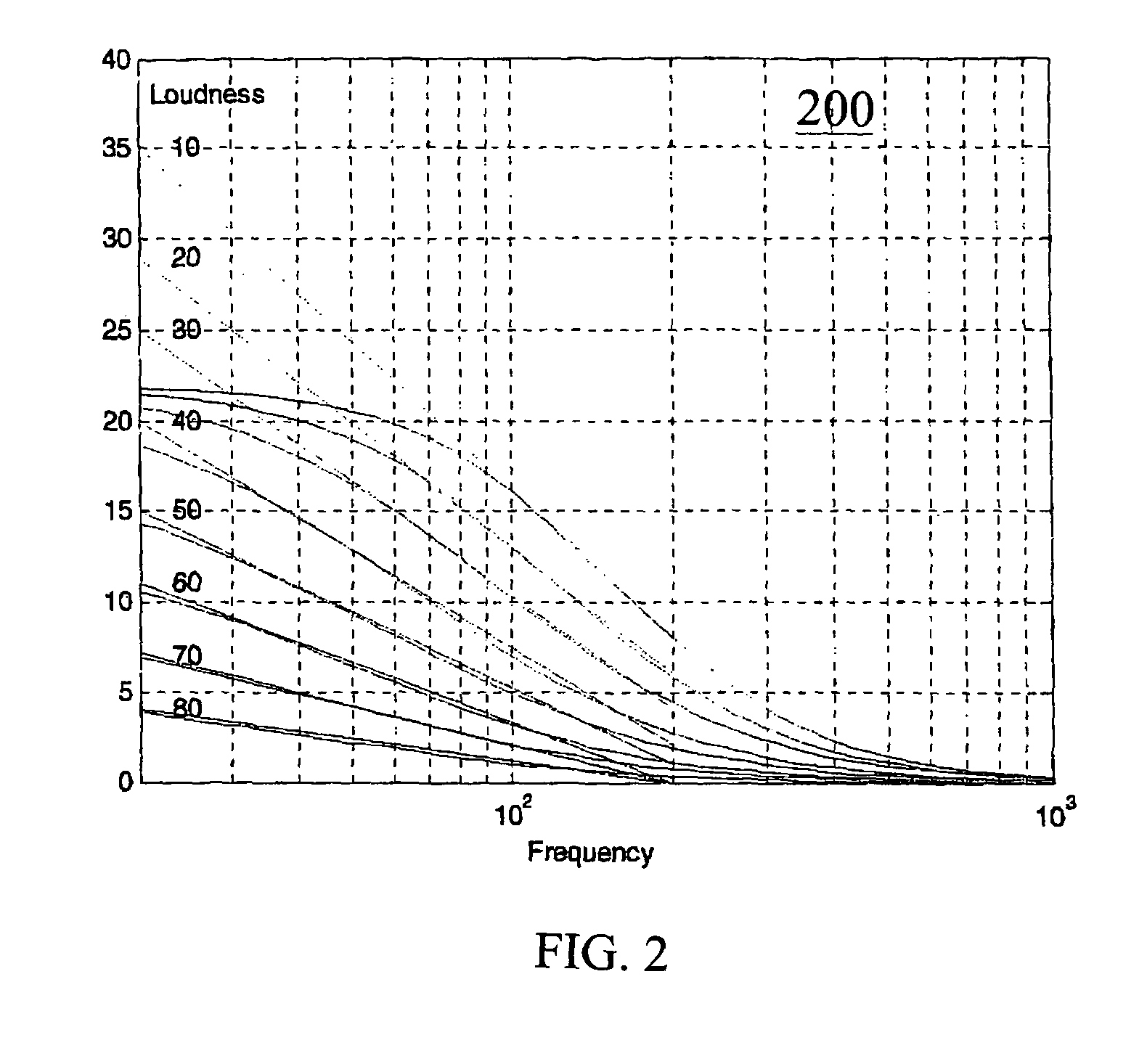System for automatic compensation of low frequency audio based on human loudness perceptual models
a low frequency audio and human perceptual model technology, applied in the field of audio signals, can solve the problems of not accurately responding to what a listener can hear, using an average signal level, and not describing how to restore that lost signal level, so as to achieve no damage to the audio equipment, no bass boost, and no volume level
- Summary
- Abstract
- Description
- Claims
- Application Information
AI Technical Summary
Benefits of technology
Problems solved by technology
Method used
Image
Examples
Embodiment Construction
[0026]FIG. 3 is a block diagram 300 of audio signal processing. The audio signal 302 is received at an analog-to-digital (A / D) converter 304. The A / D converter 304 converts the analog audio signal 302 into a digital signal that is received by the control logic block 306 at the digital signal processor (DSP) 308. The DSP 308 is in data communication with a controller 310 that also resides in the control logic block 306. The DSP 308 may be implemented as a traditional DSP, a microprocessor, application specific integrated circuit, a circuit that functions as a state machine or any combination of the above listed devices.
[0027]The controller 310 may receive input from a user interface (not shown) that affects the processing of the input audio signal, such as threshold values and ratio parameters. The received input is then passed to the DSP 308 where the parameters are stored and used. In an alternate implementation, the DSP 308 may implement the functionality of the controller 310 and...
PUM
 Login to View More
Login to View More Abstract
Description
Claims
Application Information
 Login to View More
Login to View More - R&D
- Intellectual Property
- Life Sciences
- Materials
- Tech Scout
- Unparalleled Data Quality
- Higher Quality Content
- 60% Fewer Hallucinations
Browse by: Latest US Patents, China's latest patents, Technical Efficacy Thesaurus, Application Domain, Technology Topic, Popular Technical Reports.
© 2025 PatSnap. All rights reserved.Legal|Privacy policy|Modern Slavery Act Transparency Statement|Sitemap|About US| Contact US: help@patsnap.com



